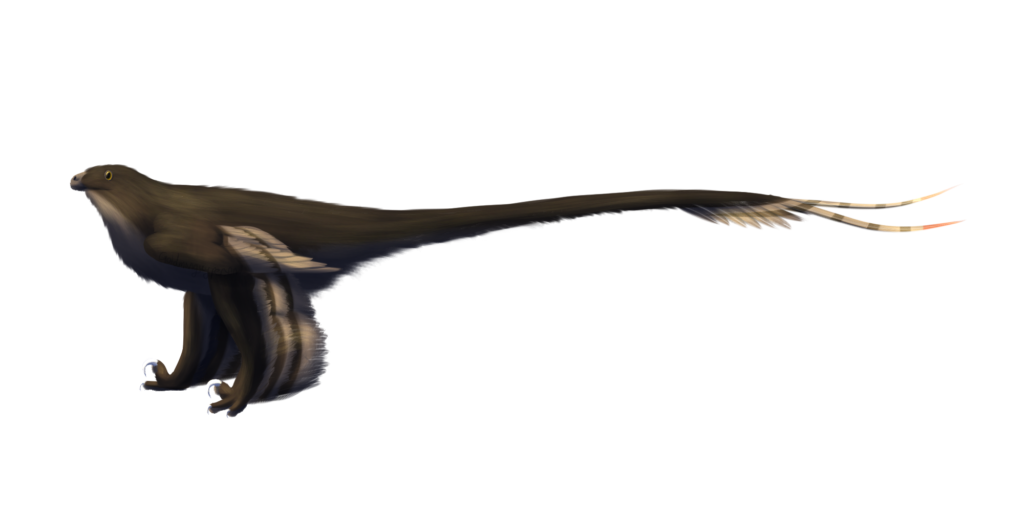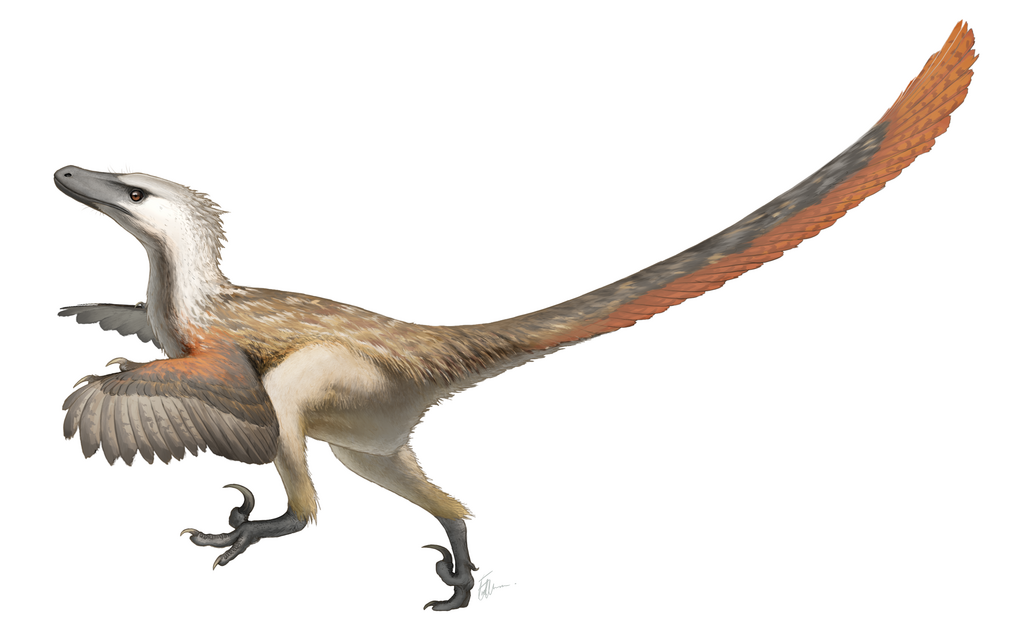When we think of prehistoric predators, few capture our imagination quite like the swift, cunning raptors that once stalked the ancient landscapes. These feathered hunters have become cultural icons thanks to films like Jurassic Park, but separating scientific fact from Hollywood fiction reveals an even more fascinating reality about these remarkable dinosaurs. Among the many questions paleontologists have explored, perhaps none is more intriguing than just how fast these agile predators could run. Recent fossil discoveries, biomechanical studies, and comparative analyses with modern animals have given us increasingly refined estimates of raptor speed capabilities, painting a clearer picture of these mesmerizing creatures and their hunting prowess.
The True Identity of “Raptors”

When discussing “raptors” in paleontological contexts, scientists are typically referring to dromaeosaurids, a family of feathered, sickle-clawed theropod dinosaurs from the Cretaceous period. This group includes well-known genera such as Velociraptor, Deinonychus, and Utahraptor. Despite popular depictions, the actual Velociraptor was only about the size of a turkey, standing roughly 1.6 feet (0.5 meters) tall at the hip and measuring about 6.8 feet (2.07 meters) in length. The larger Deinonychus and much more massive Utahraptor better match the creatures portrayed in popular media. Understanding which specific raptor species we’re discussing is crucial when evaluating their potential speed, as size and build significantly affect locomotion capabilities.
The Anatomy of Speed

Raptor dinosaurs possessed several anatomical features that suggest they were built for speed and agility. Their lightweight, hollow bones reduced body mass while maintaining structural integrity. Long, powerful hind limbs with specialized muscle attachments indicate strong propulsive capabilities, while their relatively short forelimbs kept their center of gravity optimized for running. Perhaps most notably, dromaeosaurids had a semi-rigid tail stiffened by elongated bony processes, which likely functioned as a counterbalance during rapid directional changes. Their three-toed feet with reduced inner digits showed adaptations for cursorial (running) behavior, and their famous enlarged sickle-shaped claws on the second toe were held off the ground during running, preserving their sharpness for predatory strikes. These anatomical specializations collectively point to animals highly adapted for pursuit hunting.
Velociraptor: Not As Fast As You Think

Despite its name meaning “swift thief,” the Velociraptor mongoliensis was likely not the speedster that popular culture portrays. Based on skeletal proportions, muscle attachment sites, and biomechanical modeling, paleontologists estimate that Velociraptor could reach speeds of approximately 20-25 mph (32-40 km/h). While impressive, this is considerably slower than the 40-60 mph speeds suggested in films. For comparison, elite human sprinters can reach about 28 mph, placing Velociraptor in a similar speed range. The relatively small size of Velociraptor limited its top speed compared to some of its larger relatives, as its shorter stride length restricted how quickly it could cover ground. However, what Velociraptor may have lacked in raw speed, it likely made up for with exceptional maneuverability and acceleration.
Deinonychus: The Mid-Sized Speed Demon

Deinonychus antirrhopus, whose name appropriately means “terrible claw,” was a larger dromaeosaurid standing about 3.3 feet (1 meter) tall at the hip and reaching lengths of up to 11 feet (3.4 meters). This mid-sized raptor likely possessed greater speed capabilities than its smaller cousin Velociraptor. Biomechanical studies of Deinonychus leg bones suggest it could achieve running speeds of approximately 25-30 mph (40-48 km/h), making it comparable to modern-day ostriches in brief sprints. Its longer legs provided increased stride length while maintaining the agility characteristic of dromaeosaurids. Fossil evidence suggesting Deinonychus hunted in coordinated packs indicates these dinosaurs may have used their speed tactically, with individuals potentially working together to outmaneuver prey that might have been faster in a straight-line chase.
Achillobator: The Dark Horse Contender

Achillobator giganticus represents one of the largest dromaeosaurids discovered to date, standing over 6 feet (1.8 meters) tall and measuring nearly 20 feet (6 meters) in length. This Mongolian giant from the Late Cretaceous period had uniquely proportioned limbs that have sparked debate among paleontologists regarding its locomotion capabilities. Unlike some other dromaeosaurids, Achillobator possessed relatively robust hindlimbs with proportions suggesting powerful acceleration rather than sustained high speeds. Based on its anatomy, researchers estimate Achillobator could reach speeds of 25-35 mph (40-56 km/h) in short bursts. The combination of significant mass and powerful legs likely made Achillobator an ambush predator capable of explosive acceleration rather than a long-distance pursuit hunter, similar to how modern tigers hunt compared to cheetahs.
The Potential Champion: Utahraptor

Utahraptor ostrommaysi stands as the largest confirmed dromaeosaurid, with specimens suggesting lengths of up to 23 feet (7 meters) and heights of approximately 7 feet (2.1 meters) at the hip. Despite its massive size, the Uthe tahraptor maintained many of the anatomical features associated with speed in smaller raptors. However, its substantial body mass would have imposed physical limitations on maximum velocity. Biomechanical models suggest the Utahraptor could reach speeds of approximately 20-25 mph (32-40 km/h), comparable to a galloping elephant rather than a cheetah. Interestingly, while not the fastest raptor in terms of top speed, the Utahraptor’s combination of size and velocity would have generated tremendous momentum, making it perhaps the most formidable in terms of attack force. Its massive sickle claws, some measuring nearly 9 inches (23 cm) long, suggest it could deliver devastating strikes even without achieving the highest speeds among dromaeosaurids.
Comparing Raptor Speed to Modern Animals

To put raptor speeds in perspective, comparing them with contemporary animals provides valuable context. The fastest raptors likely achieved speeds similar to modern ostriches, which can sustain 45 mph (72 km/h) over short distances. They would have been significantly slower than cheetahs, which can reach 70 mph (112 km/h) in short bursts. Most medium-sized raptors probably had speed capabilities comparable to wolves (35-40 mph) or lions (50 mph in short bursts). However, unlike many modern predators that rely primarily on speed for hunting success, raptors combined moderate speed with exceptional agility, coordination, and lethal weaponry. Their hunting strategy likely emphasized quick acceleration, rapid direction changes, and precision attacks rather than prolonged high-speed pursuits, somewhat similar to how modern birds of prey like hawks and eagles hunt.
The Science Behind Speed Estimates

Determining how fast extinct animals could run involves sophisticated scientific methodologies combining multiple disciplines. Paleontologists analyze fossil limb proportions, focusing on ratios between femur, tibia, and metatarsal bones that correlate with running ability in modern animals. Computer modeling using finite element analysis simulates stresses on dinosaur leg bones during hypothetical running scenarios, establishing biomechanical limits. Muscle attachment sites on fossils provide clues about leg power and stride mechanics, while preserved trackways can provide direct evidence of stride length and running patterns. Additionally, phylogenetic bracketing (comparing with close evolutionary relatives) offers insights when direct evidence is limited. More recently, sophisticated computational approaches integrating aerodynamics, energetics, and biomechanics have created increasingly refined models of dinosaur locomotion capabilities, leading to more conservative but scientifically robust speed estimates.
Microraptor: The Flying Raptor

Microraptor gui represents a fascinating branch of the dromaeosaurid family, possessing four wings with flight feathers on both its arms and legs. At roughly 2.6 feet (77 cm) in length and weighing only 2.2 pounds (1 kg), this small raptor from Early Cretaceous China presents a unique case for speed assessment. Unlike its ground-dwelling cousins, the Microraptor was primarily adapted for gliding or limited powered flight, with its ground locomotion capabilities being secondary. When grounded, the Microraptor likely moved at relatively modest speeds of 10-15 mph (16-24 km/h), limited by its specialized limb adaptations for aerial movement. However, while airborne, the Microraptor could have achieved speeds of 25-30 mph (40-48 km/h) during descending glides, making it possibly the “fastest” raptor when considering all modes of locomotion rather than just terrestrial running.
How Raptor Speed Influenced Hunting Strategies

The speed capabilities of various raptor species directly shaped their hunting approaches and ecological niches. Smaller, more agile raptors like Velociraptor likely specialized in pursuing smaller prey through complex environments, relying on maneuverability rather than raw speed to capture victims. Medium-sized raptors such as Deinonychus may have employed pack-hunting tactics, using coordinated movements to exhaust larger prey that individual raptors couldn’t overpower alone. Evidence of multiple Deinonychus specimens found with Tenontosaurus remains supports this hunting strategy theory. Larger raptors like the Utahraptor probably functioned as ambush predators, using cover and sudden acceleration to surprise prey before they could reach escape velocity. The specialized weaponry of all dromaeosaurids—particularly their sickle claws—suggests they didn’t need to maintain high speeds throughout a hunt; instead, they needed only to close to striking distance once before deploying their lethal arsenals.
Feathers: Help or Hindrance to Speed?

The confirmation that dromaeosaurids possessed elaborate feather coverings has profound implications for understanding their locomotion capabilities. Contrary to initial assumptions, paleontologists now believe the aerodynamic properties of feathers may have enhanced raptor running performance in several ways. Wing-like feather arrangements on the arms could have provided additional stability during high-speed turns, functioning similarly to the wing-assisted incline running observed in modern birds. Feathered tails likely improved balance during rapid directional changes. Leg feathers, depending on their exact configuration, might have offered reduced drag or additional lift during leaping attacks. However, extensive feathering would have slightly increased overall body mass and potentially created some aerodynamic drag during straight-line running. The net effect was likely context-dependent, with feathers providing selective advantages during complex hunting maneuvers while possibly imposing minor speed limitations during sustained straight-line pursuits.
The Hollywood Exaggeration Factor

Popular entertainment has consistently portrayed raptors as capable of extraordinary speeds far exceeding scientific estimates. The Jurassic Park franchise famously depicted Velociraptors (actually modeled after the larger Deinonychus) chasing jeeps and outrunning humans with ease, suggesting speeds upwards of 40-60 mph (64-96 km/h). This dramatic license has created persistent misconceptions about raptor capabilities. In reality, while impressive predators, most raptors could likely be outrun by a human on a bicycle and would struggle to keep pace with many ungulates they might have preyed upon. The Hollywood portrayal also typically ignores the growing scientific consensus that these dinosaurs were feathered, opting instead for a more reptilian appearance that better suits dramatic presentation. Despite these inaccuracies, fictional portrayals have significantly boosted public interest in these fascinating dinosaurs, inadvertently supporting research that continues to refine our understanding of their true capabilities.
The Evolutionary Significance of Raptor Speed

The speed capabilities of dromaeosaurids represent a crucial chapter in the evolutionary history of theropod dinosaurs, illustrating an important transitional stage between earlier predatory dinosaurs and modern birds. Early theropods like Coelophysis showed initial adaptations for cursorial lifestyles, but dromaeosaurids refined these traits with specialized limb proportions and lightweight skeletons that maximized velocity while maintaining predatory effectiveness. This evolutionary pressure toward speed and agility directly contributed to features that would later prove advantageous for flight in avian dinosaurs. The development of feathers, initially perhaps for display or insulation, became co-opted for improved balance and maneuverability during high-speed pursuits, establishing pre-adaptations for eventual powered flight. The evolutionary refinement of raptor speed capabilities thus represents a critical mosaic of adaptations bridging the gap between ground-dwelling predatory dinosaurs and their modern descendants, today’s birds.
Conclusion: Separating Fact from Fiction

While raptors weren’t quite the lightning-fast predators depicted in popular media, the scientific reality of these dinosaurs reveals creatures no less impressive or formidable. With estimated top speeds ranging from 20-35 mph depending on species and size, dromaeosaurids combined moderate velocity with exceptional agility, coordination, and lethal weaponry. Their hunting effectiveness came not from sustained high speeds but from smart tactics, surprise, maneuverability, and devastating attacks with their specialized claws. As feathered, warm-blooded predators with sophisticated social behaviors, these dinosaurs represent a fascinating evolutionary stage between earlier theropods and modern birds. The continuing refinement of our understanding through new fossil discoveries and advanced analytical techniques promises to further illuminate the capabilities of these remarkable prehistoric predators, whose actual attributes prove more nuanced and intriguing than even the most creative fictional portrayals.




